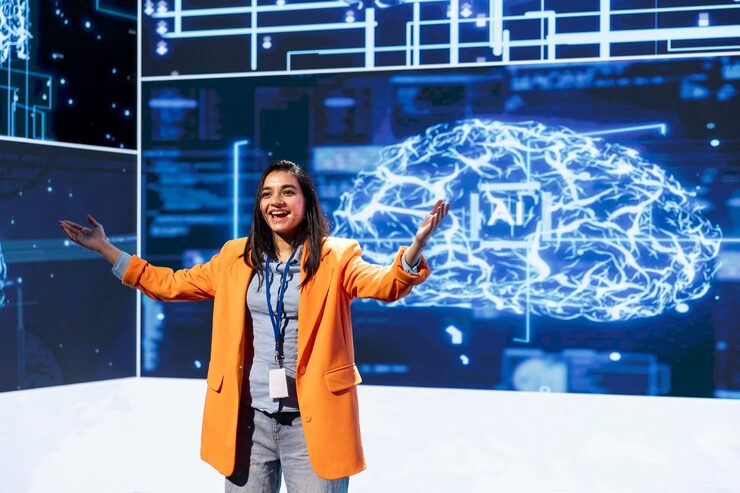Introduction
Education has entered an era where science and learning meet to transform how we teach and understand the human mind. The growing field of neurociencia Cognitiva bridges brain research and education, offering insights into how memory, emotion, and cognition shape effective learning experiences. This innovative approach helps educators and researchers explore how the brain processes information, adapts to stimuli, and retains knowledge. As a result, teachers can create more engaging, inclusive, and evidence-based educational strategies that enhance learning outcomes across diverse student populations.
Understanding Cognitive Neuroscience
Cognitive Neuroscience is the scientific study of how brain functions influence thought processes, behavior, and learning. It combines psychology, biology, and education to uncover how neural activity supports attention, decision-making, language acquisition, and emotional regulation. In education, this knowledge helps teachers understand why students learn differently and how to tailor their methods to individual cognitive strengths and weaknesses. By integrating neuroscience principles into classrooms, educators can enhance student motivation, creativity, and comprehension.
The Link Between Brain Science and Education
The connection between neuroscience and education is vital. Brain research reveals that learning is a dynamic process influenced by emotional states, sensory input, and social interaction. For instance, stress can inhibit learning by triggering the brain’s threat response, while curiosity and positive reinforcement stimulate memory retention. Teachers trained in cognitive neuroscience can use these findings to design lessons that align with brain-friendly practices, fostering curiosity and long-term engagement.
The Role of Emotion in Learning
Emotion plays a fundamental role in how humans learn. Neuroscientific studies show that emotional experiences can either strengthen or weaken memory formation. When learners are emotionally engaged, their brains release dopamine, enhancing motivation and information recall. Understanding this mechanism allows educators to develop emotionally supportive environments where students feel safe to explore, question, and fail without fear. This emotional connection drives curiosity and critical thinking—skills that modern education values highly.
Applying Neuroscience to Classroom Strategies
Practical applications of cognitive neuroscience can revolutionize classroom strategies. For example, teachers can incorporate multisensory learning—combining visual, auditory, and kinesthetic activities—to activate different brain regions. Similarly, spaced repetition and active recall techniques help consolidate long-term memory. Furthermore, mindfulness practices reduce stress and improve focus, allowing learners to regulate emotions and maintain attention. These methods show that small adjustments, rooted in neuroscience, can create a big impact on student performance and well-being.
The Intersection of Cognitive Neuroscience and Educational Psychology
While neuroscience focuses on the biological basis of learning, educational psychology explores behavior, motivation, and thought processes. Together, they form a comprehensive understanding of how the mind learns. The concept of cognitiva psicología emphasizes that cognitive functions—such as perception, memory, and reasoning—are shaped by neural activity. Integrating both fields enables educators to use data-driven approaches to improve teaching methods, assessment techniques, and curriculum design.
Cognitive Development Across Lifespan Learning
Cognitive neuroscience is not limited to early childhood education. It also applies to adult and lifelong learning. Studies show that the brain remains plastic, meaning it can form new neural connections throughout life. This concept supports the idea of lifelong education, encouraging individuals to engage in continuous learning. By understanding how aging affects cognitive function, educators can design programs that maintain mental agility and promote sustained intellectual growth among adult learners.
Technology and Neuroscience in the Classroom
Modern education increasingly relies on technology, and cognitive neuroscience supports this evolution. Digital tools, when used appropriately, can enhance learning by providing adaptive feedback and engaging multiple senses. For example, brain-computer interfaces and neurofeedback tools allow students to visualize their focus levels in real time. Virtual reality (VR) and augmented reality (AR) applications immerse learners in interactive environments that improve retention and understanding. The collaboration between technology and neuroscience promises a future where education is both personalized and scientifically optimized.
Research and Innovation at Earth University
Earth University’s Doctorate in Cognitive Neuroscience and Education focuses on combining scientific research with real-world educational challenges. The program trains professionals to analyze how brain processes affect learning, emotion, and communication. Through an interdisciplinary curriculum, students explore neuroscience, psychology, and pedagogy to develop innovative solutions that respond to modern educational needs. The university’s online format allows flexibility while maintaining high academic standards through seminars, research projects, and applied learning experiences.

Why Cognitive Neuroscience Matters for Educators
Educators equipped with knowledge of cognitive neuroscience can better identify learning barriers and create environments that promote success for all students. Understanding brain function allows teachers to apply evidence-based methods that improve attention, reduce anxiety, and enhance memory retention. Moreover, it empowers them to move away from one-size-fits-all approaches toward personalized education models. These advancements not only benefit students but also inspire teachers to become lifelong learners and innovators within their classrooms.
The Future of Learning Through Neuroscience
The future of education will be shaped by neuroscience-driven insights. As researchers continue to map neural activity, they uncover patterns that explain how different types of instruction affect brain plasticity. This will lead to more adaptive learning systems capable of responding to each student’s unique cognitive profile. Institutions like Earth University play a pivotal role in advancing this integration, fostering collaboration between scientists, educators, and technologists to create meaningful educational change.
Conclusion
Cognitive neuroscience represents a powerful bridge between brain science and education. By understanding how neural processes shape learning, educators can design teaching methods that resonate deeply with human cognition. The integration of neuroscience principles into education promises more inclusive, effective, and inspiring learning experiences. Earth University continues to lead this transformative movement, preparing professionals to apply scientific knowledge in classrooms, institutions, and communities worldwide.





Leave a Reply